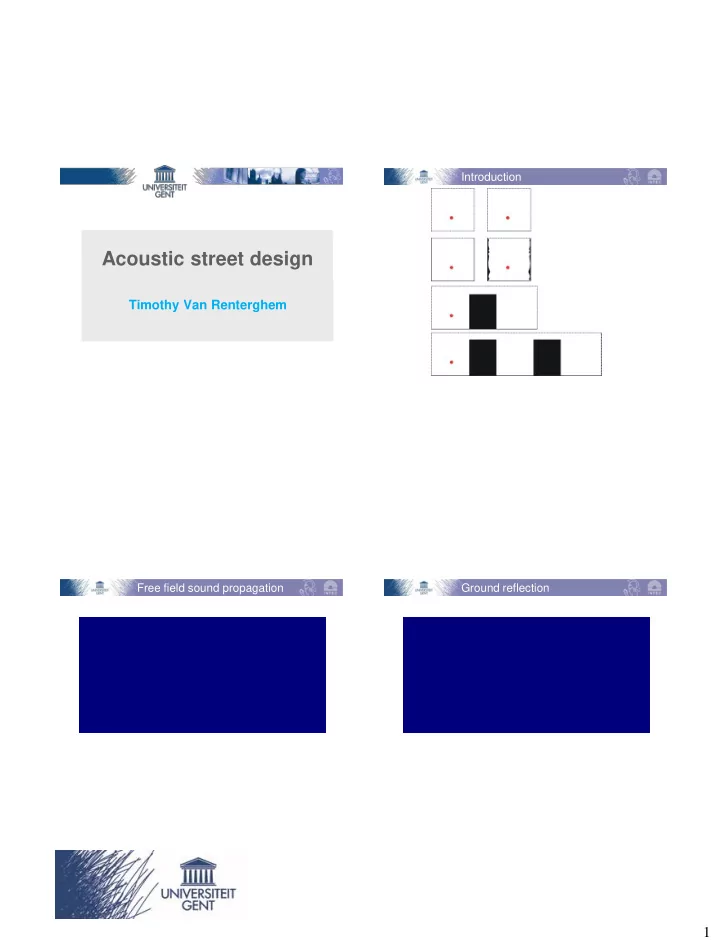

Introduction Acoustic street design Timothy Van Renterghem Free field sound propagation Ground reflection 1
Specular reflecting facades Ground reflection x=8 m Ground reflection Ground+facade reflection 1000 Hz 1000 Hz 2
Ground+facade reflection Ground+facade reflection x=8 m x=8 m Diffuse reflection Diffuse reflection a b c d Ismael et al., Applied Acoustics, Thomas et al., Journal of the 2005. Acoustical Society of America, 2013. 3
Diffuse reflection Diffuse reflection Picaut et al., Acta Acustica united with Acustica, 2009 Diffuse reflection Diffuse reflection Picaut et al., Acta Acustica united with Kang, Journal of the Acoustical Acustica, 2009 Society of America, 2000. facade height=18 m facade height=6 m 4
Diffuse reflection Urban street design Balconies Lowering facade exposure Direct shielding Balcony details are important Higher storeys better protected Building up a low-frequency diffuse sound field Changing the street’s directivity pattern Echevarria-Sanchez et al., Building and Environment, 2016 Urban street design Urban street design Echevarria-Sanchez et al., Building and Environment, 2016 self-shielding windows Echevarria-Sanchez et al., Building and Environment, 2016 5
Urban street design Street amplification Quantification Echevarria-Sanchez et al., Thomas et al., Journal Building and Environment, 2016 model validation of the Acoustical Heutschi, Applied Acoustics, Society of America, 1995. 2013. experiments simulations Diffraction to adjacent canyon Diffraction to adjacent canyon low-frequencies are favoured 6
Diffraction to adjacent canyon Diffraction to adjacent canyon facade reflection+diffraction Van Renterghem et al., Journal of the Acoustical Society of America, 2010. only diffraction Diffraction to adjacent canyon Diffraction to adjacent canyon Van Renterghem et al., Journal of Sound and Vibration, 2010. Van Renterghem et al., Journal of Sound and Vibration, 2010. 7
Diffraction to adjacent canyon Diffraction to adjacent canyon Diffraction to adjacent canyon Multiple canyon propagation Intermediate canyons 1-4 dB excess attenuation/canyon Rather frequency independent Canyon depth of limited importance Canyon width important Van Renterghem et al., Additive effect Applied Acoustics, 2006. QSide engineering model : 1dB/100 m propagation over roofs in dense urban setting No absorption, no meteo-effects, no variation in building height Schiff et al., Applied Wei et al., Acta Acustica Acoustics, 2010. united with Acustica, 2014. 8
Conclusions Street design reduces sound pressure levels Promote diffuse reflections Silent zones (pedestrians, facade) Small architectural details can have a strong effect Street amplification mainly governed by street width Reductions in streets will help at the non- directly exposed side (stronger!) Complex interactions between multiple reflections and diffraction patterns 9
Recommend
More recommend